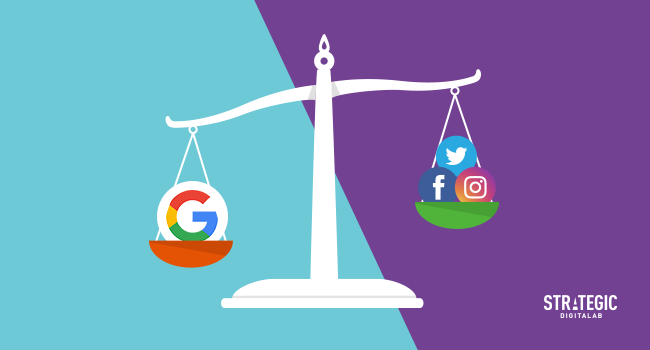As the novel coronavirus pandemic continues to spread, fears of an impending global recession are causing trepidation in the business world. Since the outbreak began in December 2019, economic growth has already slowed, following social distancing measures and lockdowns. This has affected industries like travel, hospitality and F&B, and also slowing down industrial production.
The knee-jerk reaction of business owners will be to hold their spending — and for some, the marketing budget is a non-priority. According to the report Beyond the outbreak: How COVID-19 will affect the global advertising market by strategic intelligence resource MAGNA, “many industry sectors may decrease marketing and advertising spending this year” due to slower sales and profits.
But at the same time, the report notes that: “the quarantine and social distancing policies are generating deep changes in attitudes, social norms (remote work, remote education), consumption (acceleration of e-commerce and online services), and media consumption (surge in TV viewing, OTT usage, and digital media). These shifts are likely to (at least partially) outlast the outbreak and change our society forever.”
At this time is to bolster one’s contingency plan with a digital marketing strategy. Now, more than ever, brands must be visible to its customers as in normal circumstances. At a time where people are cooped in their homes, the best way to reach out is through digital channels.
We outline some marketing trends during this time which you can leverage amid the COVID-19 crisis.
Marketing trends and effects from COVID-19:
Cheaper bid prices for PPC ads
Many organisations are planning for when the market bounces back, and thus are holding their plans. However, while all other organisations are holding back their budgets, there is lesser competition, resulting in potentially cheaper bid prices for PPC (pay-per-click) ads.
Google Certified Publishing Partner Ezoic explains that while there was initial speculation that ad rates would increase as more people would be placed in quarantine; it turns out that people are more likely to be consuming content through their devices. As companies hold back on placing ad campaigns, the report says that competition in ad auctions will decrease, thus depressing prices for everyone.
Moreover, “Online ad rates typically follow the general economy,” the report adds. The coronavirus’s impact on the global economy will likely affect website traffic and ad rates for the foreseeable future.
It forecasted that sites in the niches of travel, sports and retail are likely to have steep declines. Meanwhile, sites that focus on online entertainment, cooking, health, and science might see increases.
Due to the current volatility of the ad market, a solution is to rethink the search marketing strategy. Digital marketers can leverage the changing consumer behaviour by optimising content with relevant keywords. For example, for a health product on an eCommerce site (e.g. supplements), aside from the usual product description, digital marketers may include a descriptive explanation of each ingredient, reviews, and at least one paragraph for each benefit of the product, etc., to satisfy the needs of those who are searching for products that can boost their immunity during the crisis. “In instances such as this, it is most important to have quality ad inventory over quantity and to continue to create valuable content,” it advises. “Your content has the opportunity to get a lot of exposure right now because more people will be online.” It adds that content creators must focus on keywords that are likely to be of interest right now: healthcare, games, news, new hobbies, etc.
Increase in web traffic for B2B marketing
We observed an increase in website traffic for our B2B clients’ digital marketing activities during this period. Within the first months since its launch, the campaign achieved almost double the traffic as compared to a similar period in 2019.
This is in line with a forecast on Forbes, which interprets the phenomenon as an effect of the cancelled trade shows and exhibitions that B2B companies typically rely on to network and build customer relations. According to the report, industries that are not digital-native may be reeling in the loss of clients acquired through word-of-mouth referrals or on the strength of a hard-won reputation. Moreover, they may already be dealing with lost millions through cancelled events.
What these B2B businesses may do is to reallocate their budgets into social media marketing, content marketing, search engine optimisation (SEO) and account-based marketing (ABM) campaigns with the end goal of branding awareness, customer engagement, and lead generation.
The key is to not just use digital strategy as “an emergency fill-in,” as Forbes puts it, but to provide long-term value that will help the brand even beyond the pandemic.
The shift in consumer behaviour
It is undeniable that the numerous lockdowns and community quarantines in different countries have drastically restricted the movement of people who used to be exposed to out-of-home (OOH) advertising. As people stay home, they are spending more time online.
The sociological effect of the quarantine and social distancing policies will likely outlast the outbreak. Companies that have yet to go digital, or whose digital strategies are minimal must ride the wave as soon as possible in order to build resilience for the aftermath of the COVID-19 pandemic.
Various critics explain that in the midst of a crisis of an uncertain nature, marketers feel the pressure to cut back on marketing and advertising activities because of financial uncertainty, supply issues and the perceived risks for a brand to communicate in a sensitive climate. After all, business research and marketing literature have recorded that brands that slash their marketing spending during crises hurt their long-term business.
Albeit the crisis the world is facing now, it might be an opportunity to increase your share of voice and win more market share, laying the foundation for when the crisis is over.







